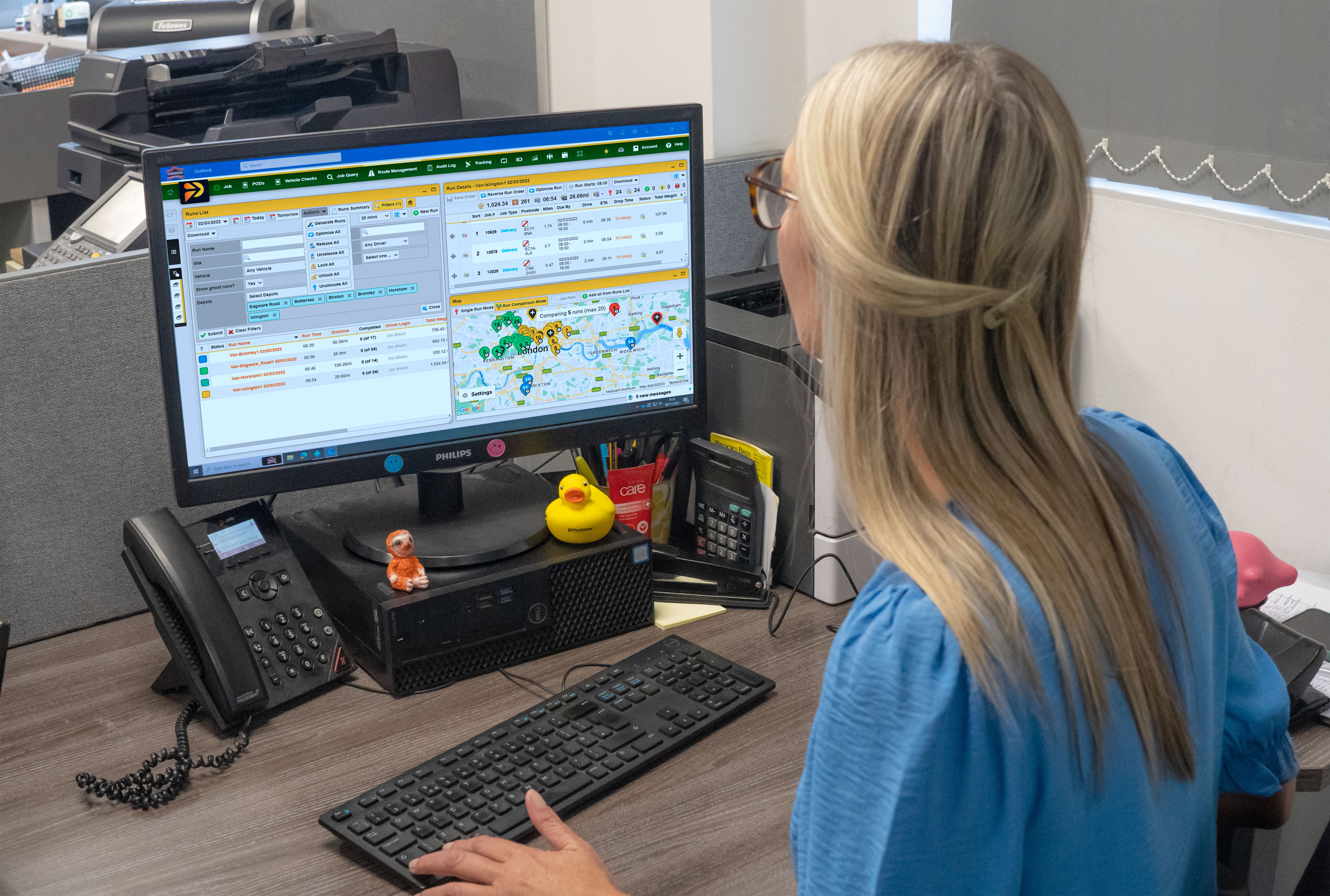Reducing Your Fleet’s Carbon Footprint Through Route Optimisation

Reducing carbon emissions is a growing concern for logistics companies as the industry faces increasing pressure to become more sustainable. One effective way to tackle this challenge is through route optimisation, a tool that helps plan the most efficient delivery routes while lowering environmental impact. Let’s take a closer look at how route optimisation contributes to reducing carbon emissions in logistics.
What is Route Optimisation?
Route optimisation is a technology that uses algorithms to plan delivery routes that minimise distance, time, and fuel consumption. It considers various factors like vehicle capacity, delivery time windows, and traffic patterns to create the most efficient path for each vehicle in the fleet.
Cutting Down on Excess Mileage
One of the biggest sources of emissions in logistics is unnecessary driving caused by inefficient route planning. Without optimisation, drivers may travel longer distances or take indirect routes, increasing fuel use and emissions. Route optimisation reduces this by calculating the shortest, most direct routes that meet all delivery requirements. This means vehicles spend less time on the road and produce fewer emissions.
Reducing Vehicle Idling and Stop Time
Idling engines and prolonged stops contribute significantly to fuel waste and carbon emissions. Route optimisation helps reduce these by scheduling deliveries to avoid congestion and timing stops more effectively. Efficient delivery sequencing ensures that drivers can complete their routes with fewer delays, reducing idle time and emissions.
Better Fleet Utilisation
Optimising routes also allows logistics companies to make better use of their fleet. By planning loads and routes carefully, vehicles operate closer to full capacity, reducing the total number of trips needed. Fewer trips mean fewer emissions overall, helping your business lower its carbon footprint.
Supporting Corporate Sustainability Goals
Using route optimisation aligns your logistics operations with wider environmental goals. Reducing emissions helps meet regulatory requirements and supports commitments to sustainability and corporate social responsibility. It also improves your company’s reputation with customers who value eco-friendly business practices.
The Financial Benefits of Lower Emissions
Beyond the environmental impact, cutting emissions through route optimisation translates into cost savings. Lower fuel consumption means reduced operating expenses. The combined effect of better routing and fuel savings can improve profit margins, making sustainability a win-win for your business.
Conclusion
Route optimisation is a practical and effective tool for reducing carbon emissions in logistics. By cutting excess mileage, lowering idle times, and improving fleet utilisation, it helps businesses operate more sustainably without sacrificing efficiency.
If your logistics company wants to reduce its environmental impact while saving costs, route optimisation is a smart choice. Contact us today to learn how our solutions can support your sustainability goals and improve your bottom line.


